Two metal sphere of same mass are suspended form a common point by a light insulating string.The length of each string is same.The sphere are given electric charges +q on one end and +4q on the other.Which of the following diagram best shows the resulting positons of spheres?
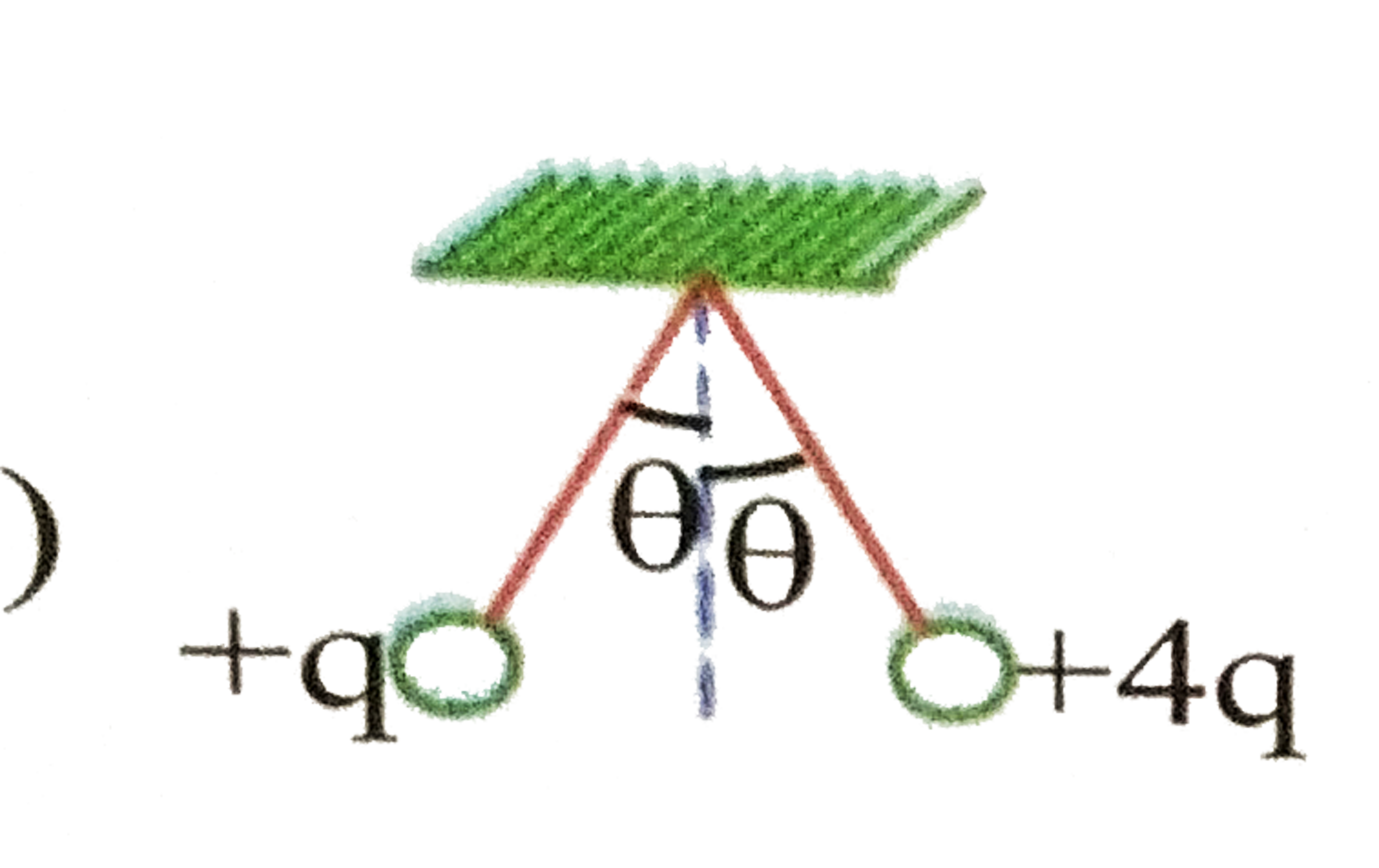

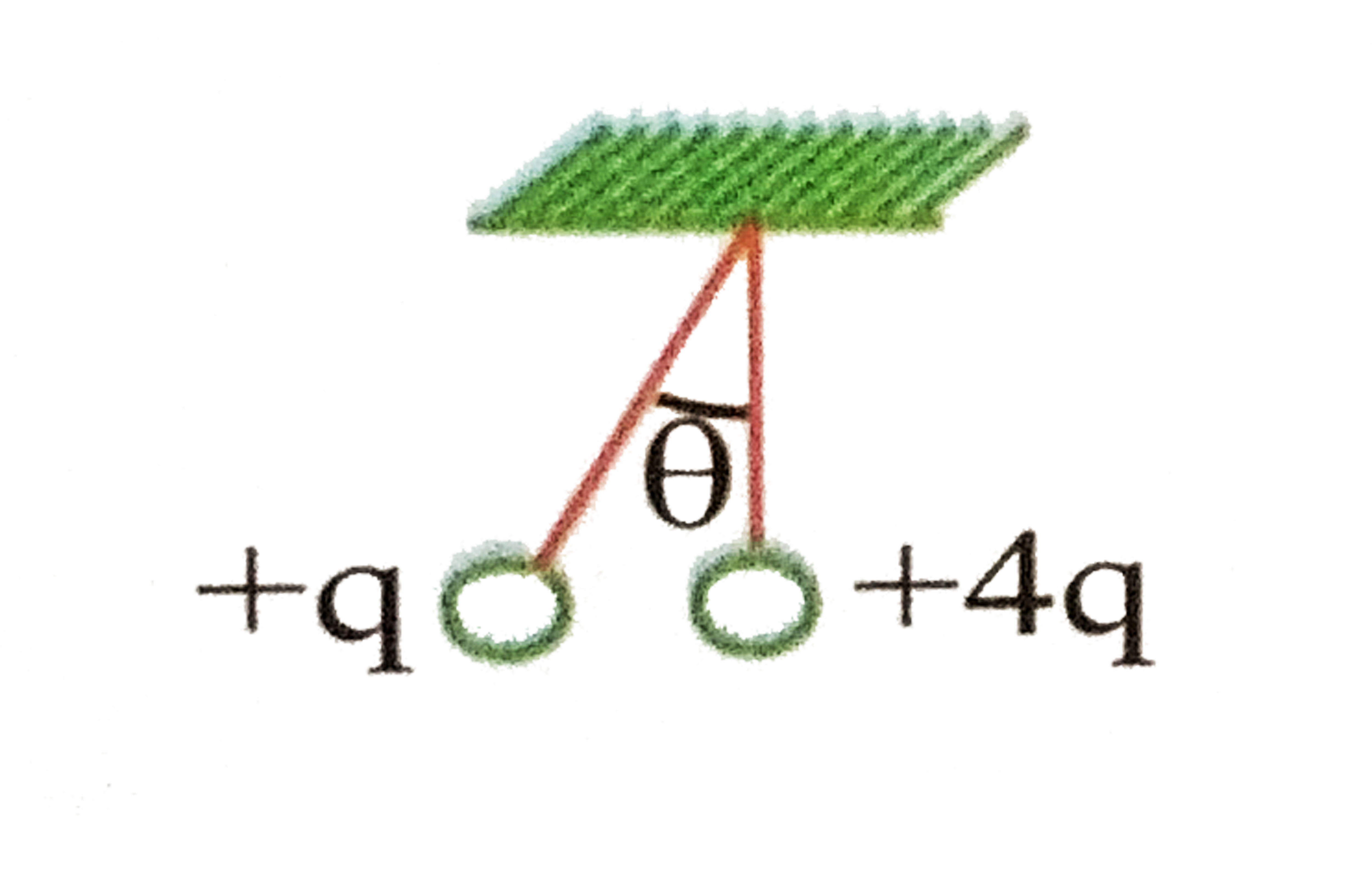
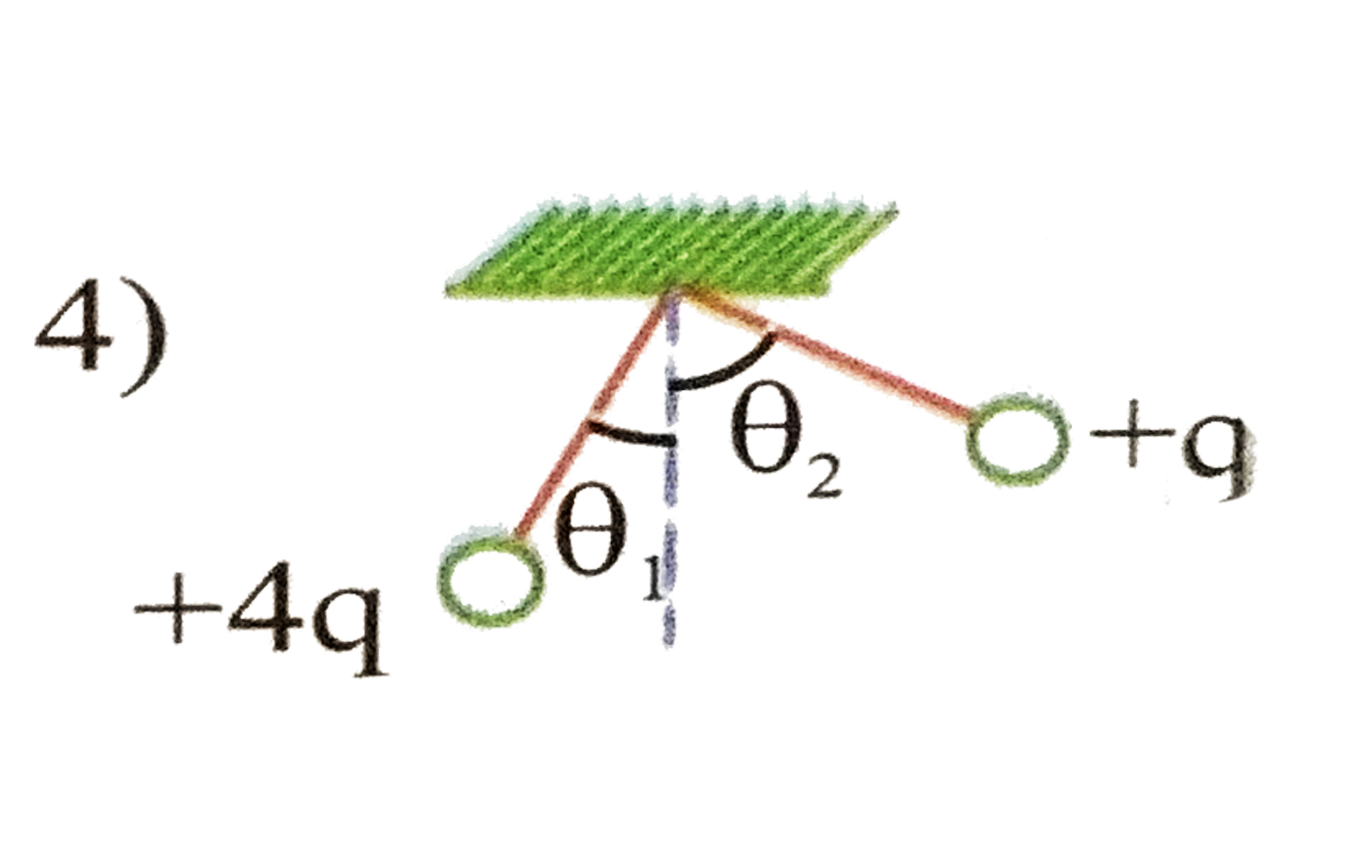
The correct Answer is:1
Step by step video, text & image solution for Two metal sphere of same mass are suspended form a common point by a light insulating string.The length of each string is same.The sphere are given electric charges +q on one end and +4q on the other.Which of the following diagram best shows the resulting positons of spheres? by Physics experts to help you in doubts & scoring excellent marks in Class 12 exams.
Topper's Solved these Questions
- BOOK - NARAYNACHAPTER - ELECTROSTATICS AND GAUSS LAWEXERCISE - Level 1(C.W)24videos
ELECTROSTATICS AND GAUSS LAW
- BOOK - NARAYNACHAPTER - ELECTROSTATICS AND GAUSS LAWEXERCISE - Level II(C.W)27videos
ELECTROSTATICS AND GAUSS LAW
- BOOK - NARAYNACHAPTER - ELECTROSTATICS AND GAUSS LAWEXERCISE - Intergers type question11videos
ELECTROSTATICS AND GAUSS LAW
- BOOK - NARAYNACHAPTER - ELECTROSTATIC POTENTIAL AND CAPACITANCEEXERCISE - ADDITIONAL PROBLEMS14videos
ELECTROSTATIC POTENTIAL AND CAPACITANCE
- BOOK - NARAYNACHAPTER - EXPERIMENTAL PHYSICSEXERCISE - Comprehension type6videos
EXPERIMENTAL PHYSICS
Similar Questions
Two small spheres, each having a mass of 20 g, are suspended form a common point by two insulating strings of length 40 cm each. The spheres are identically charged and the speration between the balls at equilibrium is found to be 4 cm . Find the charge on each sphere.
View SolutionTwo identical balls , each having a charge q and mass m , are suspended from a common point by two insultating strings each of length L. The balls are held at a separation x and then released. Find
(a) the electric force on each ball
(b) the component of the resultant force on a ball along and perpendicular to string
(c ) the tension in the string
(d) the acceleration of one of the balls. Consider the situation only for the instant just after the release.View Solution
Knowledge Check
- Question 1 - Select One
Two metal sphere of same mass are suspended form a common point by a light insulating string.The length of each string is same.The sphere are given electric charges +q on one end and +4q on the other.Which of the following diagram best shows the resulting positions of spheres?
A B
B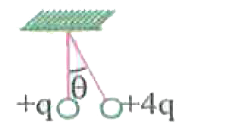 C
C D
D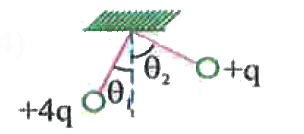
- Question 2 - Select One
Two small balls, each having equal positive charge Q are suspended by two insulationg strings of equal length l from a hook fixed to a stand. It mass of each ball =m and total angle between the two strings is 60∘m, then find the charge on each ball.
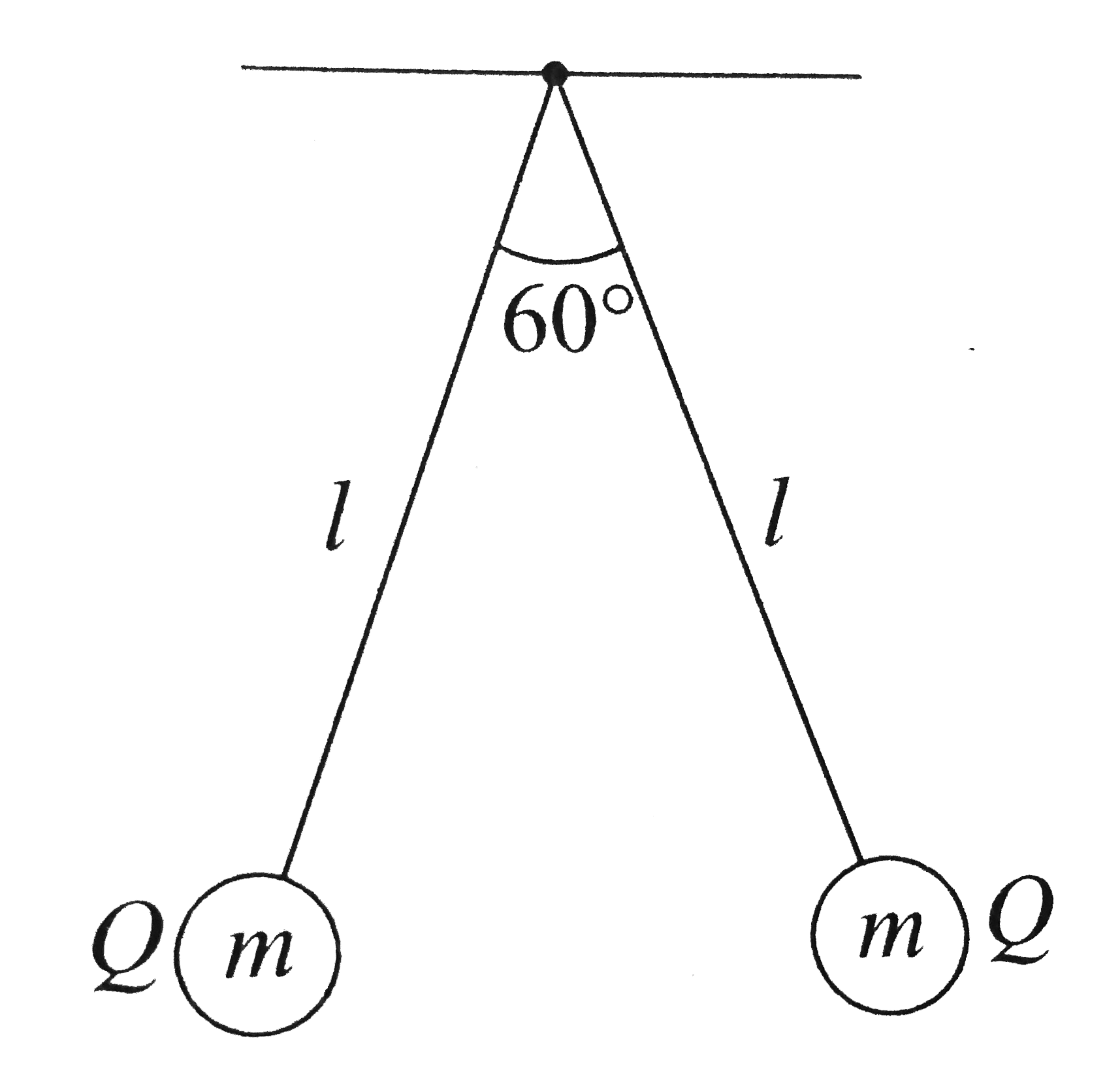 AL√√3mgkBL√mg√3kCL√mgkDL3√mgk
AL√√3mgkBL√mg√3kCL√mgkDL3√mgk - Question 3 - Select One
Two identical charged spheres suspended form a common point by two massless strings of lengths l, are initially at a distance d(d>>l) apart because of their mutual repulsion. The charges brgin to leak from both the spheres at a constant rate. As a result, the spheres approach each other with a velocity v. Then v varies as a function of the distance x between the spheres, as
Av∝x−1Bv∝x12Cv∝xDv∝x−12
Three identically charged, small spheres each of mass m are suspended from a common point by insulated light strings each of length I. The spheres are always on vertices of an equilateral triangle of length of the sides x(<<l). Calculate the rate dq/ dt with which charge on each sphere increases if length of the sides of the equilateral triangle increases slowly according to law dxdt=a√x
View SolutionTwo small spheres each of mass m are suspended from a common point by threads 0.5 m long. They are equally charged and repel each other to a distance of 0.28m. If =g10ms−2, what is the charge on each sphere?
View SolutionTwo identical spheres of mass m and charge q are suspended from a common point by two threads of the same length l and it is found that threads make an angle θ with the vertical when the spheres are in equilibrium . Calculate the value of q.
View SolutionTwo positively charged sphere of masses m1 and m2 are suspended from a common point at the ceiling by identical insulating massless strings of length l. Charges on the two spheres are q1 and q2 respectively. Equilibrium both strings make the same angle θ with the vertical. then
View SolutionTwo identical charged spheres suspended from a common point by two mass-less strings of length l are initially at a distance d ( d<<l) apart because of their mutual repulsion . The charge begins to leak from both the spheres at a constant rate. As a result the charge approach each other with a velocity v. Then as a function of distance x between them .
View Solution

